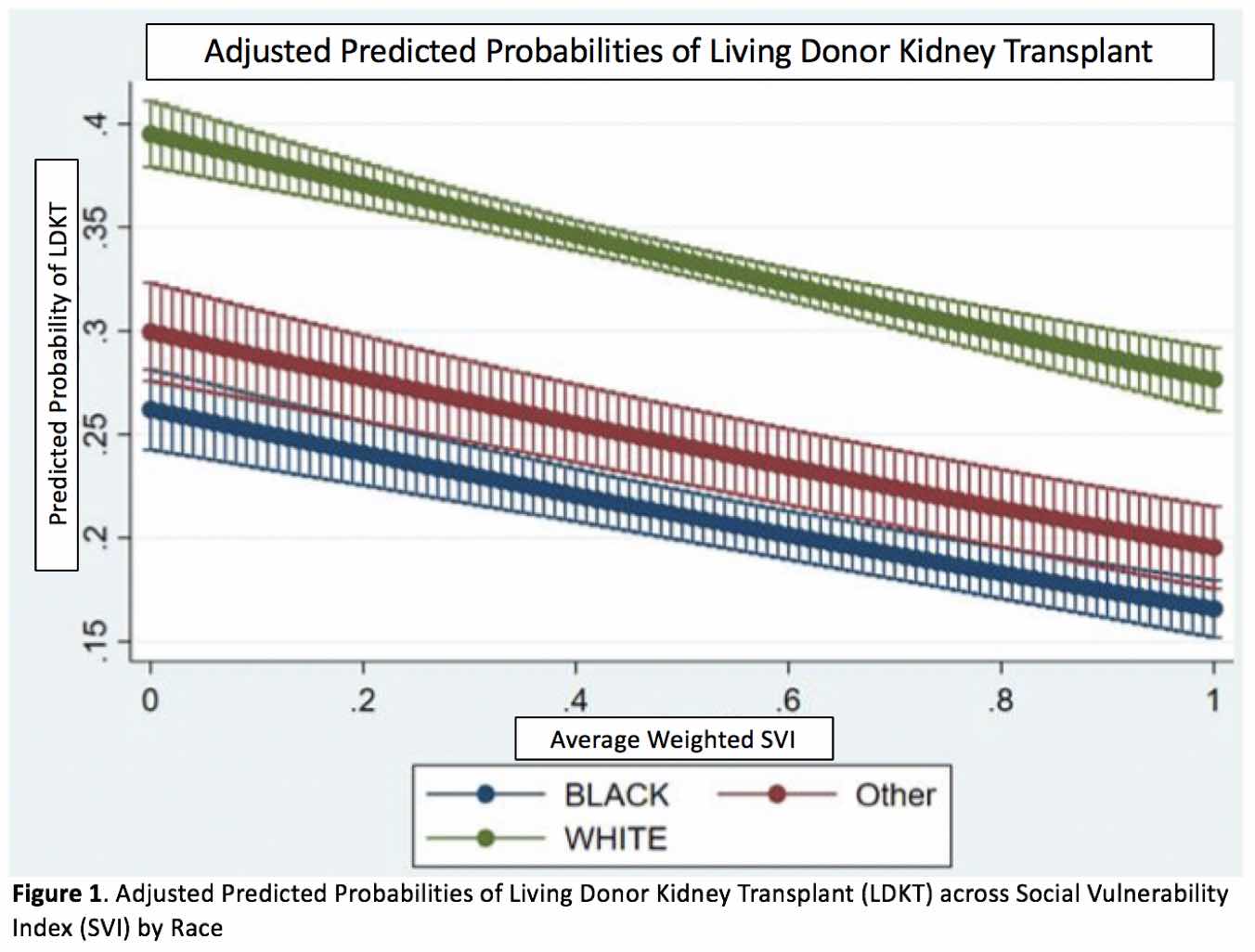Living Donor Kidney Transplantation Racial Disparities Persist Independent of Social Vulnerability
1University of Alabama at Birmingham Hospital, Birmingham, AL, 2Hospital of the University of Pennsylvania, Philadelphia, PA
Meeting: 2021 American Transplant Congress
Abstract number: 369
Keywords: African-American, Kidney transplantation, Living donor, Multivariate analysis
Topic: Clinical Science » Kidney » Kidney Living Donor: Other
Session Information
Session Name: Live Kidney Donation
Session Type: Rapid Fire Oral Abstract
Date: Tuesday, June 8, 2021
Session Time: 6:00pm-7:00pm
 Presentation Time: 6:15pm-6:20pm
Presentation Time: 6:15pm-6:20pm
Location: Virtual
*Purpose: Living donor kidney transplantation (LDKT) confers a significant survival benefit over deceased donor transplantation. Racial disparities in access to LDKT are well recognized, yet they have increased in the last two decades. LDKT inequities have been largely attributed to contextual poverty and socioeconomic variability, however the association between LDKT and comprehensive measures of social vulnerability has not been characterized.
*Methods: This retrospective study utilized the Scientific Registry of Transplant Recipients to identify adult, kidney-only transplant recipients between 1/1/2018-12/31/2018. Census tract-level data from the Centers for Disease Control and Prevention’s 2018 Social Vulnerability Index (SVI), were linked to recipients by zip code. Logistic regression was utilized to evaluate the association between LDKT and SVI and race, controlling for patient- and community-level characteristics. Average adjusted predicted probabilities of LDKT across SVI were plotted by race.
*Results: 20,380 kidney-only transplant recipients were included, of which 30% received LDKT. Higher SVI (e.g., greater social vulnerability) was significantly associated with lower odds of LDKT (adjusted odds ratio (aOR): 0.47, 95% confidence interval (CI): 0.40-0.57, p<0.0001). After controlling for SVI, African Americans (AAs) had 57% lower odds (aOR: 0.43, 95%CI: 0.39-0.48, p<0.0001) and other races had 45% lower odds (aOR: 0.55, 95%CI: 0.48-0.63, p<0.0001) of LDKT compared to their white counterparts. Average marginal effects for LDKT at the lowest SVI were 13% and 9% for AAs and other races, respectively, relative to white recipients (Figure 1).
*Conclusions: Greater social vulnerability is significantly associated with lower odds of LDKT. Racial disparities in LDKT persist independent of social vulnerability, suggesting that other factors, such as sociocultural barriers and unconscious biases require greater attention to mitigate inequities.
To cite this abstract in AMA style:
Killian AC, McLeod MC, Shelton B, Reed RD, MacLennan P, Qu H, Orandi BJ, Kumar V, Sawinski D, Cannon RM, Anderson DJ, Hanaway MJ, Locke JE. Living Donor Kidney Transplantation Racial Disparities Persist Independent of Social Vulnerability [abstract]. Am J Transplant. 2021; 21 (suppl 3). https://atcmeetingabstracts.com/abstract/living-donor-kidney-transplantation-racial-disparities-persist-independent-of-social-vulnerability/. Accessed January 1, 2026.« Back to 2021 American Transplant Congress

